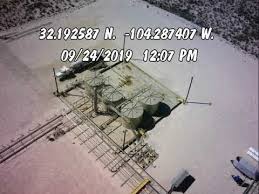
The EPA and the New Mexico Environment Department say recent helicopter flyovers of the Permian and San Juan Basins documented higher-than-expected emissions and leak rates from oil and gas equipment.
The helicopters used forward-looking infrared technology to determine the emissions trends in the oil and gas operations. The FLIR technology makes emissions from the oil and natural gas visible to the naked eye.
In the Permian Basin, the flyovers involved 9,100 storage tanks, 505 leaking methane and 1,400 flares of which 58 were unlit and leaking methane.
In the San Juan Basin of northern New Mexico, 1,080 storage tanks observed and 61 were leaking methane. At least 62 flares were observed and two were unlit and emitting methane.

The two agencies said the leak rate in the Permian basin was 5%, up from the 2% rate found in 2019 flyovers. The leak rate in the San Juan Basin was 3% but it was not included in the flyovers of 2019.
The emissions, which mostly result from equipment failures and unaddressed leaks, documented during the flyovers in the Permian and San Juan Basins are significantly higher than those reported by industry and are in line with those identified by non-governmental organizations and academia.
The EPA and the New Mexico Environment Department called them “disappointing findings” which followed 18 months of ongoing stakeholder discussions with the oil and gas industry to reduce methane emissions.
“It’s clear that voluntary emissions reductions measures undertaken by some operators are not enough to solve this problem,” said NMED Cabinet Secretary James Kenney. “This is an undeniable call to action for our department to strengthen our draft ozone precursor rules and for every oil and natural gas operator with leaking equipment documented in these videos to immediately get emissions under control.”
Source: New Mexico Environmental Department






